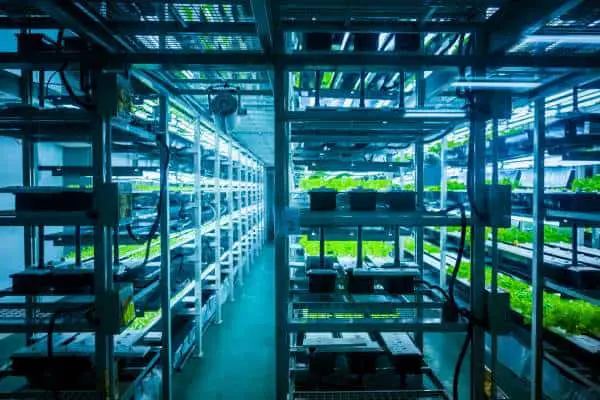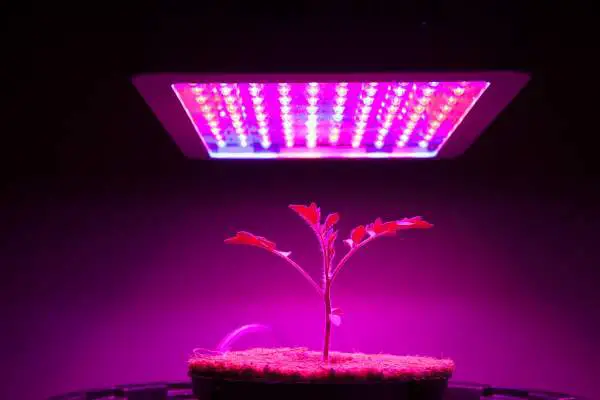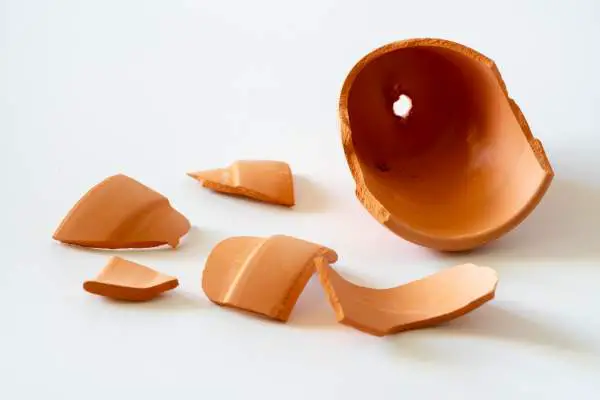There are vast numbers of people who have heard of hydroponics, and the majority of those know that systems can be set up indoors. This leaves a begging question by some. Do hydroponic plants need sunlight?
The answer to this simple question could be answered very quickly in one word. However, it wouldn’t be entirely accurate. Rather than saying ‘yes’ plants need sunlight, it is more correct to say plants need light to grow, and in the same breath, you can add, they also need the dark.
In hydroponics, we can now provide all the light we need to plants to help them grow, so in this case, no they don’t need sunlight. What plants really need is the right kind of light, and the correct amount of light for them to reach their full potential.
Here we will take a look at what light plants need to grow, what artificial lighting does in replacing sunlight and its downfalls, and why a mixture of both might be the best option.
How Light Affects Plant Growth
There is no question, we all take light for granted, and it is when we become gardeners that we appreciate the value of good light (especially sunlight). Aside from fungi and mushrooms, there is no way we can grow anything in the dark. Understanding light requirements are vital for your plants, and if you are using artificial lighting rigs, it can have a direct impact on your pocket.
Here we will run through the essential elements of lighting requirements and photosynthesis that plants need to enable them to grow to their full potential.
Photosynthesis
Photosynthesis – you probably learned about it in school, here’s a quick recap of the important bits and how it related to hydroponics.
Plants are what is known as autotrophs. This means they are capable of creating nutrition inside their bodies. To do this, they need to perform the following through absorption from the atmosphere:
- Absorb minerals and nutrients through the rooting system
- Take up water through the rooting system
- Absorb carbon dioxide through the pores in the leaves
For a plant to combine all these together for food, they require energy, and this they get from light via the green chemical in their leaves called Chlorophyll.
Oxygen molecules and glucose are produced when carbon dioxide and water are mixed with sunlight and chlorophyll. Here glucose is used for the plant’s growth and the bearing of fruit, as a byproduct of this, oxygen is released into the atmosphere.
Seasonal Lighting Effects
The one major downside to sunlight is that it isn’t the same during every month of the year. The length and intensity will change during the different seasons. Plants have adapted to this, so, when there is plenty of light in spring and summer, the plants focus on growth and bearing fruit or blooming.
During times as winter approaches, plants focus more on conserving energy and reducing growth. Photosynthesis is diminished, and leaves begin losing their chlorophyll, and this is why we see leaves that are turning brown, yellow, or red during the fall.
Why the Light Spectrum is Important
This is where things begin to get interesting because this is where we see what we need to do to replace the spectrum of light the sun produces.
The visible light falls between the wavelengths of 390 – 700 nanometers. The different wavelengths inside this range produce different colors for the human eye. These colors are scattered in what is more commonly known as ROYGBIV, or Red, Orange, Yellow, Green, Blue, Indigo, and Violet. Red possesses the longest wavelength with the lowest energy, and at the other end of the spectrum, the blue and violet lights contain shorter wavelengths and more energy.
Leaves on plants respond to light that falls within the 390 – 700-nanometer wavelengths, where the chlorophyll in the leaves absorbs light as a means of creating food. Plants actually only focus on one part of the spectrum, and this is the 495 – 570 nm range, where the chlorophyll reflects the green part of the spectrum, and this is why leaves are green.
Blue Light Spectrum
The wavelength of light here is 400 – 500 nm. This light is packed with energy and affects leaf growth which we know as ‘vegetative’ or ‘veg’ growth.’ Chlorophyll production is affected by this blue light, and only small amounts are required compared to red light.
When plants don’t receive enough blue light, they will begin growing weaker and will have yellow streaks in the leaves rather than green.
Red Light Spectrum
This low energy part of the spectrum is essential for plants blooming and flowering, and if there is a deficiency in this spectrum, there will be delayed, or weak flowering.
It is vital for growers to understand the spectrum, because when they are growing indoors, it is up to them to replace sunlight, and from the next part, you can see this isn’t as easy as it appears.
Challenges of Replacing Sunlight with Grow Lights
With all the above, we can see as long as plants receive the right sort of light which covers the full range of the spectrum, they should develop.
The 3 crucial factors are:
- Spectrum: Both red and blue are required for plants to flourish.
- Intensity: This is the brightness of the light and how much energy will fall on the leaf in the form of photons. This dictates the rate of photosynthesis, and the higher the intensity, the higher the rate of photosynthesis.
- Duration: This is the amount of light a plant will face during the day. Seasonal light affects plant growth so changing these patterns will affect the overall growth of the plants.
When we are replicating the sun by using grow lights, these must be able to reproduce all of the above. Out of the three, the duration is the easiest to reproduce because it only requires the grow lights to be left on for longer.
Intensity can be a significant challenge when using some grow lights. Although this can be altered by moving the lights closer to the plants to increase the intensity, it comes with the downside of the lights producing more heat where plants can begin to wilt or die.
The types of bulbs in use can also be challenging because the sun offers one source that produces the full spectrum of light via these different blue and red wavelengths. With artificial lighting, it isn’t yet possible for any light bulb or single source to produce both ends of the spectrum, and to cover the blue and red ends of the spectrum.
Indoor growers do often have a workaround for this and use a mixture of colder and warmer light sources.
Trying to replicate sunlight isn’t easy, but when you find the right balance using multiple light sources and some trial and error. Growers can achieve outstanding results with an indoor hydroponic system.
Also read: Indoor vs Outdoor Hydroponics
Common Grow Light Options
Here is a quick rundown of common grow light options indoor growers use with their indoor hydroponics systems.
HID (High-Intensity Discharge): These incandescent lamps are common for indoor growing. They are power-hungry and throw out lots of heat. This means you are limited to how close you can place them to the plants. HID lights include both High-Pressure Sodium (redder), and Metal Halide (bluer). These are used more often by commercial hydroponic farms.
Fluorescent: These lighting options are easier to manage, produce less heat, and are longer lasting while being more cost-effective to run. The major downside to these is they produce cooler light (bluer), so they don’t provide all of a plant’s requirements. This lighting type is used more in home-based growing systems where they are mixed with other red-spectrum grow lights if they are growing fruits or flowering plants. For herbs, this lighting type is more than ideal. The most common variety is T5 grow lights.
LED: LED grow lights are gaining popularity because they can be designed to emit light at both the blue and red ends of the spectrum. These light sources can be included in the same lighting panel, so there is no need for mixing and matching of light sources. For indoor growers, these are the most cost-efficient to run.
Calculating Garden Lighting Needs
Now we see that lighting is crucial for plant growth, we need to look at how we can calculate the amount of light required for a given growing space, and for any of the given lighting types.
This is vital because lights only throw out specific amounts of light, and adding more or less of them in the hope they will help plants grow isn’t a solution. Doing this can actually harm plants, or stunt growth rather than delivering the right amount of light they require,
This phase is also crucial when it comes to purchasing a lighting system because all of them are very different in operation, purchase cost, and running cost. One other thing to consider is each lighting type throws out varying amounts of light, and this can be vital for growing various plants, as well as overall healthy plant growth.
Calculating Lighting Requirements for a Hydroponic Canopy
Although plants have different requirements, there still needs to be a general way of calculating your hydroponic lighting requirements. Many growers, in the beginning, make the mistake of calculating against their entire growing room, it is only the growing space that needs to be included for this calculation.
Without going into plant types at the moment, the typical lighting requirements for an indoor hydroponic system will be 20 – 40 watts per square foot, with almost all plants falling into this range. Additionally, the type of lamps being used will also affect their placement above plants.
HID lamps should be placed at least 24 inches away from your crops due to the amount of heat they produce. Aside from this, HID’s are the easiest lamps you can use to calculate your lighting requirements.
Fluorescent bulbs, although more energy efficient are not as ideal for larger plants unless a higher number of lamps is used. This comes down to the fact, fluorescents only emit around 10W per square foot. This means they need to be placed closer to plants to have an effect, and the ideal distance is 6 – 12 inches away. Any further than this and light intensity decreases considerably.
To replicate the light output of an HID light with fluorescent lights means you can quickly lose your energy efficiency and cost savings. T5 fluorescent tubes are the most effective because they have more power than other tubes, and can be placed closer to plants because of lower heat output.
If you were to replace an HID light with fluorescent, for plants that require 40W per square foot, it would need four T5 tubes to be used.
LED lights can also be hard to calculate because of the way they are marketed. Because they are shown to have a longer lifespan than other lighting types, they don’t run at their advertised wattage. If you have a 5W blub, this will only consume 3W of power.
When you translate this to your growing area, you need to take the power input to make your calculation. As an example, if you had a growing area of 10 square feet, and you have a plant that requires 40W per square foot to grow. This would take 400W, but when purchasing your LEDs, this would be advertised as 1000W.
This again can affect running costs, and in most cases, the cost savings come from the longevity of the bulb, and low heat output which requires no additional cooling.
As all lighting systems have a different fall-off, growers can place these lights in optimal positions by using reflectors as we will see here.
Lighting Reflectors
Once upon a time, these reflectors were never considered, but nowadays, their use is more common. The type of reflector can also be an important decision because they can help dispel heat away from your growing area.
In most cases, these lighting reflectors are based on the wattage of your lighting system. This means you have 400W for smaller reflectors, 600W for medium, and 1000W for use with larger reflectors. At this stage, controlling heat emitted from the lights can be crucial, and if you have no external means, then you will require air-cooled reflectors.
Reflector Cross Patterns
Two reflectors will overlap where they cast their lights, and to obtain the most efficient set-up, these cross-lighting patterns must be taken into consideration, because when there is an overlap, the energy will be combined.
Cross patterns can be used to a grower’s advantage and can help increase productivity and also maximize the efficiency of the lighting system. Much of this decision is down to the grower. You find some growers, place their lights closer together to increase the higher wattage for each square foot, while other growers move their reflectors further apart to improve cost efficiency.
Plant Lighting Requirements
All plants have different lighting requirements at various stages, and it is for this that some lighting systems are more suitable. Here is a run-through of where each light can be beneficial in different circumstances.
| Best For | Plant Types Which Benefit | Advantages | |
| HID | Seedlings, vegetative growth, | Tomatoes, peppers, fruit trees, spices, and herbs | Can provide most of the lighting spectrum. Good for larger gardens |
| Fluorescent | Seedlings & leafy green vegetables | Herbs, lettuce, wheatgrass, and other leafy edibles | Cool to run. Ideal for propagation. The only bulb needed for simple plants |
| LED | Non-flowering plants or vegetative growth | Basil, lettuce, herbs or anything in small grow tents | Long-lasting, can produce most of the lighting spectrum, cheap and cool to run |
Sunlight and Grow Lights Working Together
Where there used to be trains of thought for indoor growing and outdoor growing, things are changing. Now, many growers are making full use of the available sunlight and combining the practice of using supplemental lighting to produce a cost-effective means of delivering the ideal lighting conditions for crop production.
Although some of the methods of operation are geared to commercial enterprises. Growers can make the best of both no matter how large or small their hydroponics system is. The energy of the sun is used to power the essential plant functions, while indoor conditions are mimicked to further control the environment.
This means almost any place can be used that has access to sunlight, when this level drops, light sensors, blackout tarps, or other means of blocking out light, take over, and with supplemental lighting, heaters, and dehumidifiers the ideal conditions are given to the plants for the optimal length of time.
With a combination of the two elements, there can be a massive cost saving compared to growing indoors and only relying on artificial lights. A lighting system that might only be used for a few hours per day compared to 12 – 14, can make a massive difference in running costs.
When a system swaps over, and the indoor elements of growing take over, the plants will be getting the exact amount of light, and other environmental factors they require.
Conclusion
There is no doubt, at present, there is no substitute for the full spectrum of light that can be obtained from the sun during the summer. And, as many indoor growers are now realizing, this is free. If you take a 1000W grow light, this is still no comparison against a warm summer day.
It is still crucial for hydroponic systems to be located in the right place. Sheltered areas or greenhouses which have access to a southern facing exposure are ideal. These can be suitable for most hydroponic system types from NFT, aeroponics systems, and ebb and flow grow beds.
These conditions can be made ideal for growing a vast range of plants from herbs, tomatoes, and all the way to hydroponic strawberries.
When you hear the question, does hydroponics need sunlight? You now have the knowledge to know that plants don’t need sunlight in the actual sense, but they do need the equivalent of what sunlight will deliver to them.
What we can see from indoor growing techniques, growers are now capable of building on what nature offers and having the opportunity to reap more benefits than was ever before possible.





